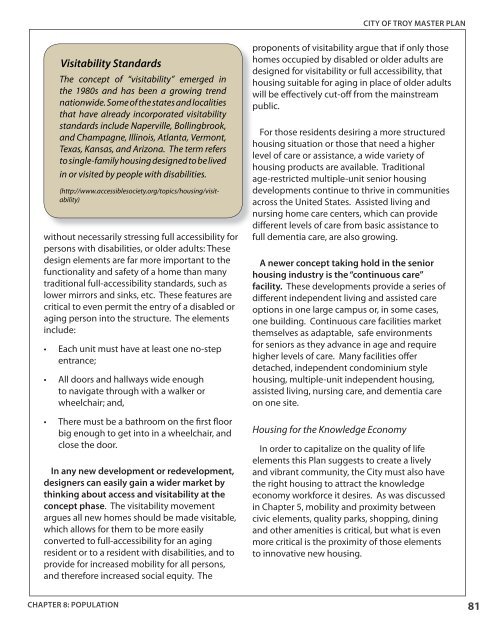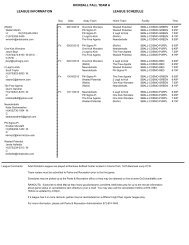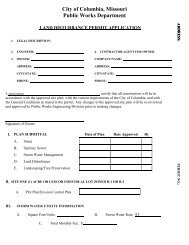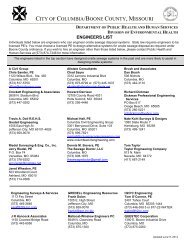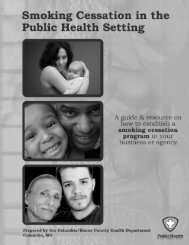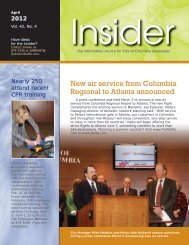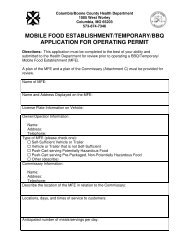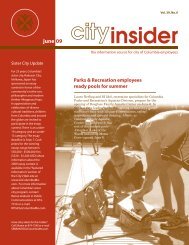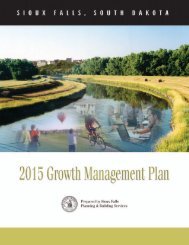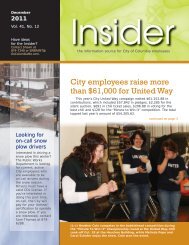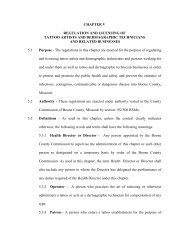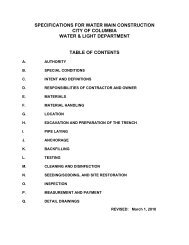Housing Options in <strong>Troy</strong>The most challenging part <strong>of</strong> long-rangeplanning for housing a changing populationinvolves taking account <strong>of</strong> the existing housingstock in the <strong>City</strong> and understanding in what areasit could be augmented to meet the anticipatedchanges in demand based on population trendsand characteristics. There are several criticalthemes facing the <strong>City</strong> with regard to housing.First, national trends and local projectionsindicate that the residents <strong>of</strong> <strong>Troy</strong> are aging.As people mature, their needs change withregard to housing. Secondly, the <strong>City</strong> desires toencourage homeownership, and must thereforebe concerned with ensuring that high-quality,but affordable housing options are available.Finally, as the <strong>City</strong> labors to provide modernamenities and foster a globally recognized centerfor knowledge economy businesses, it mustensure that this workforce finds <strong>Troy</strong> to be richwith the best housing options in the region.Housing an Aging Population and Persons WithDisabilitiesThe next generation <strong>of</strong> older adults is onewith a new perspective on retirement; one thatincludes being physically active, staying closeto family and friends, moving into a new secondcareer, pursuing education, or accomplishing alifelong dream. Given the expected shift in the<strong>City</strong> <strong>of</strong> <strong>Troy</strong>’s population, this <strong>Plan</strong> must addresshow the housing needs <strong>of</strong> active seniors willbe met. It is important to note that populationage shifts and the resulting housing demandsare largely cyclical, though not necessarilyconsistent, from cycle to cycle. Many <strong>of</strong> theconcepts described here also provide options forpersons with disabilities in <strong>Troy</strong>.The Civic Infrastructure Task Force for <strong>Troy</strong>Vision 2020 established a vision for <strong>Troy</strong> whereseniors continuously find meaningful ways inwhich to be involved in and to contribute to the<strong>City</strong> as they enjoy a great quality <strong>of</strong> life. A bigpart <strong>of</strong> that vision is the provision <strong>of</strong> adequatehousing that meets the needs <strong>of</strong> an agingpopulation, regardless <strong>of</strong> their condition orincome level.Where the previous generation <strong>of</strong> olderAmericans may have aspired to live in a resortstyledestination community, today’s activeseniors are staying active longer than everbefore. According to Del Webb, one <strong>of</strong> America’sforemost developers <strong>of</strong> age-restricted, “activeadult”lifestyle communities, as long as 8 yearsago, more than 85 percent <strong>of</strong> nearly retiredrespondents to a company study preferredto remain in close proximity to their existingneighborhoods. 1To this end, the development community mustaddress a number <strong>of</strong> outstanding concerns withregard to the safety and security <strong>of</strong> older adultsto empower them to age in place. In additionto diversifying the housing stock, communitiesmust ensure that new housing opportunitiesfor older adults are designed from the groundup to ensure that the homes being built canevolve with the owner’s stage in life. Giventhe complications, limitations, and expense inretr<strong>of</strong>itting existing homes to meet the needs <strong>of</strong>an aging tenant, many homes no longer remainpractical as the homeowner ages.If considered at the conceptual phase, a newhome can not only appeal to both the youngerand older populations, it can easily be convertedto a structure which provides for the safety andsecurity <strong>of</strong> an elderly tenant, allowing that tenantto remain in place much longer than could haveotherwise been possible.“Visitability” is a first step towards makinghomes more inclusive, and one which canempower a homeowner to age in place. Coinedin the 1980s, the term “visitability” is used todescribe a few basic, affordable design optionswhich broaden the equity in housing accessibility1. Riddle, Lyn (1998), “The Formula for Sun <strong>City</strong> Moves East andNorth”, The New York Times, 4 January80 CHAPTER 8: POPULATION
CITY OF TROY MASTER PLANVisitability StandardsThe concept <strong>of</strong> “visitability” emerged inthe 1980s and has been a growing trendnationwide. Some <strong>of</strong> the states and localitiesthat have already incorporated visitabilitystandards include Naperville, Bollingbrook,and Champagne, Illinois, Atlanta, Vermont,Texas, Kansas, and Arizona. The term refersto single-family housing designed to be livedin or visited by people with disabilities.(http://www.accessiblesociety.org/topics/housing/visitability)without necessarily stressing full accessibility forpersons with disabilities, or older adults: Thesedesign elements are far more important to thefunctionality and safety <strong>of</strong> a home than manytraditional full-accessibility standards, such aslower mirrors and sinks, etc. These features arecritical to even permit the entry <strong>of</strong> a disabled oraging person into the structure. The elementsinclude:• Each unit must have at least one no-stepentrance;• All doors and hallways wide enoughto navigate through with a walker orwheelchair; and,• There must be a bathroom on the first floorbig enough to get into in a wheelchair, andclose the door.In any new development or redevelopment,designers can easily gain a wider market bythinking about access and visitability at theconcept phase. The visitability movementargues all new homes should be made visitable,which allows for them to be more easilyconverted to full-accessibility for an agingresident or to a resident with disabilities, and toprovide for increased mobility for all persons,and therefore increased social equity. Theproponents <strong>of</strong> visitability argue that if only thosehomes occupied by disabled or older adults aredesigned for visitability or full accessibility, thathousing suitable for aging in place <strong>of</strong> older adultswill be effectively cut-<strong>of</strong>f from the mainstreampublic.For those residents desiring a more structuredhousing situation or those that need a higherlevel <strong>of</strong> care or assistance, a wide variety <strong>of</strong>housing products are available. Traditionalage-restricted multiple-unit senior housingdevelopments continue to thrive in communitiesacross the United States. Assisted living andnursing home care centers, which can providedifferent levels <strong>of</strong> care from basic assistance t<strong>of</strong>ull dementia care, are also growing.A newer concept taking hold in the seniorhousing industry is the “continuous care”facility. These developments provide a series <strong>of</strong>different independent living and assisted careoptions in one large campus or, in some cases,one building. Continuous care facilities marketthemselves as adaptable, safe environmentsfor seniors as they advance in age and requirehigher levels <strong>of</strong> care. Many facilities <strong>of</strong>ferdetached, independent condominium stylehousing, multiple-unit independent housing,assisted living, nursing care, and dementia careon one site.Housing for the Knowledge EconomyIn order to capitalize on the quality <strong>of</strong> lifeelements this <strong>Plan</strong> suggests to create a livelyand vibrant community, the <strong>City</strong> must also havethe right housing to attract the knowledgeeconomy workforce it desires. As was discussedin Chapter 5, mobility and proximity betweencivic elements, quality parks, shopping, diningand other amenities is critical, but what is evenmore critical is the proximity <strong>of</strong> those elementsto innovative new housing.CHAPTER 8: POPULATION81


